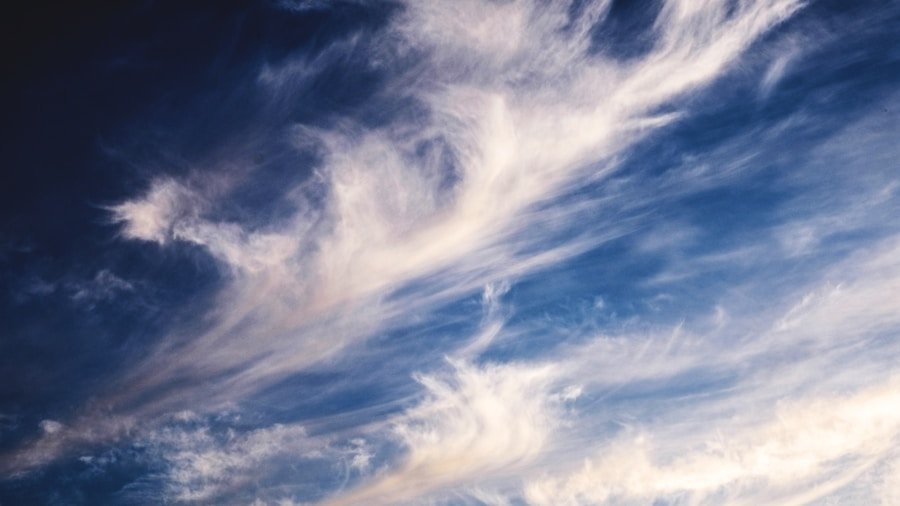Double exposures are a photography technique where two separate images are combined into a single frame. This can be achieved in-camera by exposing the same frame of film or sensor twice, or it can be done digitally in post-processing. Double exposures can create unique and artistic images that blend two different scenes or subjects together. This technique has been used in photography for many years, and it continues to be a popular way for photographers to express their creativity.
When creating a double exposure, it’s important to consider how the two images will interact with each other. The key is to find two subjects that complement each other and create a cohesive and visually appealing final image. Double exposures can be used to convey a variety of emotions and concepts, from surreal and dreamlike to thought-provoking and symbolic. Understanding the potential of double exposures and how they can be used to tell a story or convey a message is essential for creating impactful and meaningful images.
Choosing the Right Subjects
Choosing the right subjects for a double exposure is crucial for creating a compelling and visually striking image. When selecting subjects, it’s important to consider how they will interact with each other and how their shapes, textures, and colors will blend together. Look for subjects that have interesting and contrasting elements, such as a natural landscape and an urban cityscape, or a person and an object. By choosing subjects that have visual interest and contrast, you can create dynamic and engaging double exposures.
Another important consideration when choosing subjects for double exposures is the emotional impact of the images. Think about the story or message you want to convey with your double exposure, and select subjects that will help you achieve that goal. For example, if you want to create a double exposure that conveys a sense of nostalgia, you might choose subjects that evoke feelings of the past, such as old photographs or vintage objects. By carefully selecting subjects that have visual and emotional impact, you can create double exposures that are not only visually stunning but also meaningful and thought-provoking.
Mastering the Technical Aspects
Mastering the technical aspects of creating double exposures is essential for achieving the desired results. Whether you’re using a film camera or a digital camera, understanding how to properly expose and combine two images is key to creating successful double exposures. When using a film camera, it’s important to understand how to manually control the exposure settings to ensure that both images are properly exposed. This may involve adjusting the aperture, shutter speed, or ISO to achieve the desired effect.
If you’re using a digital camera, you can create double exposures in-camera by using the multiple exposure mode or by blending two images together in post-processing. In-camera multiple exposure modes allow you to combine two images directly on the camera, while post-processing techniques involve using software such as Photoshop or Lightroom to blend two images together. Understanding how to use these tools effectively is essential for creating seamless and visually appealing double exposures.
Experimenting with Different Settings
Experimenting with different settings is an important part of creating successful double exposures. By adjusting the exposure settings, such as aperture, shutter speed, and ISO, you can achieve different effects and moods in your double exposures. For example, using a wide aperture can create a shallow depth of field and blur the background, while using a small aperture can create a sharp and detailed image. Similarly, adjusting the shutter speed can create different levels of motion blur in your double exposures, adding a sense of movement and dynamism to the final image.
In addition to exposure settings, experimenting with different shooting techniques can also yield interesting results in double exposures. For example, using intentional camera movement or panning while shooting can create abstract and painterly effects in your double exposures. By experimenting with different settings and shooting techniques, you can discover new ways to create visually stunning and unique double exposures.
Using Double Exposures for Creative Storytelling
Double exposures can be used as a powerful tool for creative storytelling in photography. By combining two separate images into a single frame, photographers can create visual narratives that convey emotions, concepts, and ideas. Whether it’s blending two different landscapes to create a surreal and dreamlike scene, or combining a portrait with an object to convey a sense of identity or connection, double exposures offer endless possibilities for creative storytelling.
When using double exposures for creative storytelling, it’s important to consider the relationship between the two images and how they work together to convey a message or tell a story. Think about the visual elements in each image and how they interact with each other when combined. Consider the emotions and concepts you want to convey with your double exposure, and use the visual language of photography to create a compelling and meaningful narrative.
Post-Processing Techniques
Post-processing techniques play an important role in creating stunning double exposures. Whether you’re using film or digital photography, post-processing allows you to fine-tune your double exposures and enhance their visual impact. In digital photography, software such as Photoshop or Lightroom offers a wide range of tools for blending and manipulating images to create seamless and visually striking double exposures.
When post-processing double exposures, it’s important to pay attention to details such as exposure, contrast, color balance, and blending modes. By carefully adjusting these elements, you can create a cohesive and visually appealing final image that effectively combines two separate subjects into a single frame. Additionally, post-processing allows you to experiment with different effects and styles, such as black and white conversions, color toning, or adding textures and overlays to enhance the mood and atmosphere of your double exposures.
Tips for Creating Stunning Double Exposures
Creating stunning double exposures requires creativity, experimentation, and attention to detail. Here are some tips for achieving impactful and visually striking double exposures:
1. Plan your composition: Before creating a double exposure, think about how the two images will interact with each other and plan your composition accordingly.
2. Pay attention to contrast: Look for subjects that have visual contrast in terms of shape, texture, color, or mood to create dynamic and engaging double exposures.
3. Experiment with different settings: Adjust exposure settings, shooting techniques, and post-processing effects to discover new ways to create visually stunning double exposures.
4. Tell a story: Use double exposures as a tool for creative storytelling by conveying emotions, concepts, and ideas through visual narratives.
5. Pay attention to post-processing: Fine-tune your double exposures in post-processing by adjusting exposure, contrast, color balance, and blending modes to create cohesive and visually appealing final images.
By following these tips and mastering the technical aspects of creating double exposures, you can unleash your creativity and produce stunning and impactful images that captivate viewers and convey meaningful stories. Double exposures offer endless possibilities for artistic expression in photography, so don’t be afraid to experiment and push the boundaries of this versatile technique.








